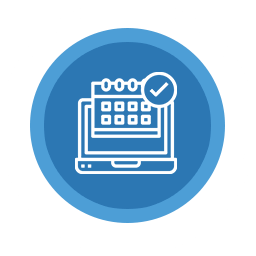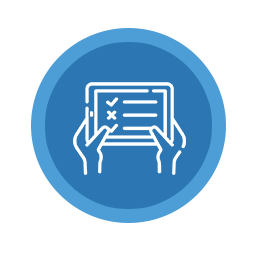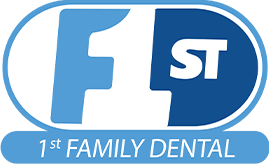The best way to keep your child’s smile bright and healthy for life is to start them on the right path by creating and maintaining an effective oral hygiene routine right at home. Here are some helpful tips to keep your child’s teeth clean and avoid dental emergencies and issues such as cavities in between his or her regular checkup visits.
Infants & Toddlers 0-2
Good oral care can begin before your infant even has teeth. At least twice per day, wipe your baby’s gums with a wet washcloth to remove residue and film from milk or formula. This will also teach your baby to become used to you putting your hands in their mouth. Following a normal pattern of child dental development, babies usually start teething between 4 and 10 months. As soon as your child’s first tooth erupts, you should begin brushing it twice a day using a toothbrush and water (there are a variety of baby-safe toothbrushes and finger brushes that can be used with infants). However, do not leave any oral hygiene products for your baby to chew or play with, as they can present choking or injury hazards.
At 1st Family Dental, we follow American Dental Association (ADA) guidelines and recommend that you bring your child in for their first dental visit near their first birthday, and begin regular 6 month checkup and cleaning visits.
Choosing a Toothbrush for your Child
Selecting a toothbrush that is a good fit for your child can be a very personal choice, and with all of the brushes available on the market, it can be quite confusing, too!
Use soft bristles: 1st Family Dental recommends that you select a toothbrush with soft bristles. Brushes with harder bristles are not more effective at cleaning your child’s teeth; rather, harder bristles can irritate their gums and may even make them more resistant to wanting to brush.
Find a comfortable fit: Make sure the head of your toothbrush fits comfortably in your child’s mouth, and can reach all of the surfaces of your teeth, even in the back. There are a variety of child sized toothbrushes, with offerings offered on age range and size.
We also recommend selecting a toothbrush that is of good quality. Your child should not use the toothbrush unsupervised, but may still be tempted to bite or chew on the bristles. Finally, you will need to replace your child’s toothbrush every 3 months or sooner if you find that the bristles become frayed, bent or otherwise less effective. Beyond that, the remaining challenge is to find a toothbrush that you child likes and will want to use. There is a very wide range of toothbrushes available on the market that can make noise or light up, have recognizable characters on them, or may otherwise entice your child to use them. Including your child in the selection of their toothbrush can help give them some control over their oral health and keep them interested in maintaining a healthy routine.
Choosing a Toothpaste for your Child
Toothpaste is another decision that will depend on a variety of factors. The ADA currently recommends the use of toothpaste with fluoride when brushing for ages 3 through adulthood. However, at 1st Family Dental, we monitor ongoing research and are aware that some individuals and groups have raised concerns about the widespread use of fluoride, including water fluoridation. While we will continue to support the use of fluoride in our offices and at homes, we are respectful of any individual’s decision not to use fluoride toothpaste.
No matter what type of toothpaste you choose, you should closely supervise the toothbrushing process to ensure your child is brushing their teeth properly and to help them avoid swallowing or eating the toothpaste.
There are are growing number of toothpastes and powders available on the market that either contain fluoride or are fluoride-free. For more information about alternative types of toothpastes and tooth powders, we suggest visiting the Environmental Working Group’s information site about toothpaste. What we find most important at 1st Family Dental is the maintenance of a healthy oral hygiene routine that includes brushing twice a day, with a toothpaste that you are comfortable using.
Children ages 2+
Once your child is around 2 years old, he or she should be able to spit while brushing, so parents are encouraged to introduce toothpaste around this time. You should be brushing your child’s teeth for them, encouraging them to hold on to the toothbrush and help you, until you are confident they can do it themselves effectively, and without swallowing the toothpaste.
- Depending on your child’s age, use either a smear or a pea-sized dab of toothpaste. Take care that your child does not swallow the toothpaste.
- Using a soft-bristled toothbrush, brush the inside surface of each tooth first, where plaque may accumulate most. Brush gently back and forth.
- Clean the outer surfaces of each tooth. Angle the brush along the outer gumline and gently brush back and forth.
- Brush the chewing surface of each tooth. Gently brush back and forth.
- Use the tip of the brush to clean behind each front tooth, both top and bottom.
- Encourage your child to let you brush their tongue
You should be able to begin flossing your child’s teeth by age 4, or sooner if possible. Use the same technique as for adult flossing, by wrapping a long length of floss around your fingers and use your thumbs to push and gently move the floss back and forth to reach between the teeth to the gum line. Take special care to be gentle with this process, so that your child has a positive experience and will not be resistant to flossing now or in the future.
Older Children
Children ages 10-12 typically have most of their adult teeth, and can begin to follow the adult oral care routine and brush their teeth independently, although they may still need to or prefer to use a child-sized toothbrush with a smaller head. You will still need to check their teeth periodically to make sure they are brushing properly and thoroughly. Your child’s dentist or hygienist will also let you know how your child is doing with their oral hygiene routine at regular 6 month checkup and cleaning visits.



